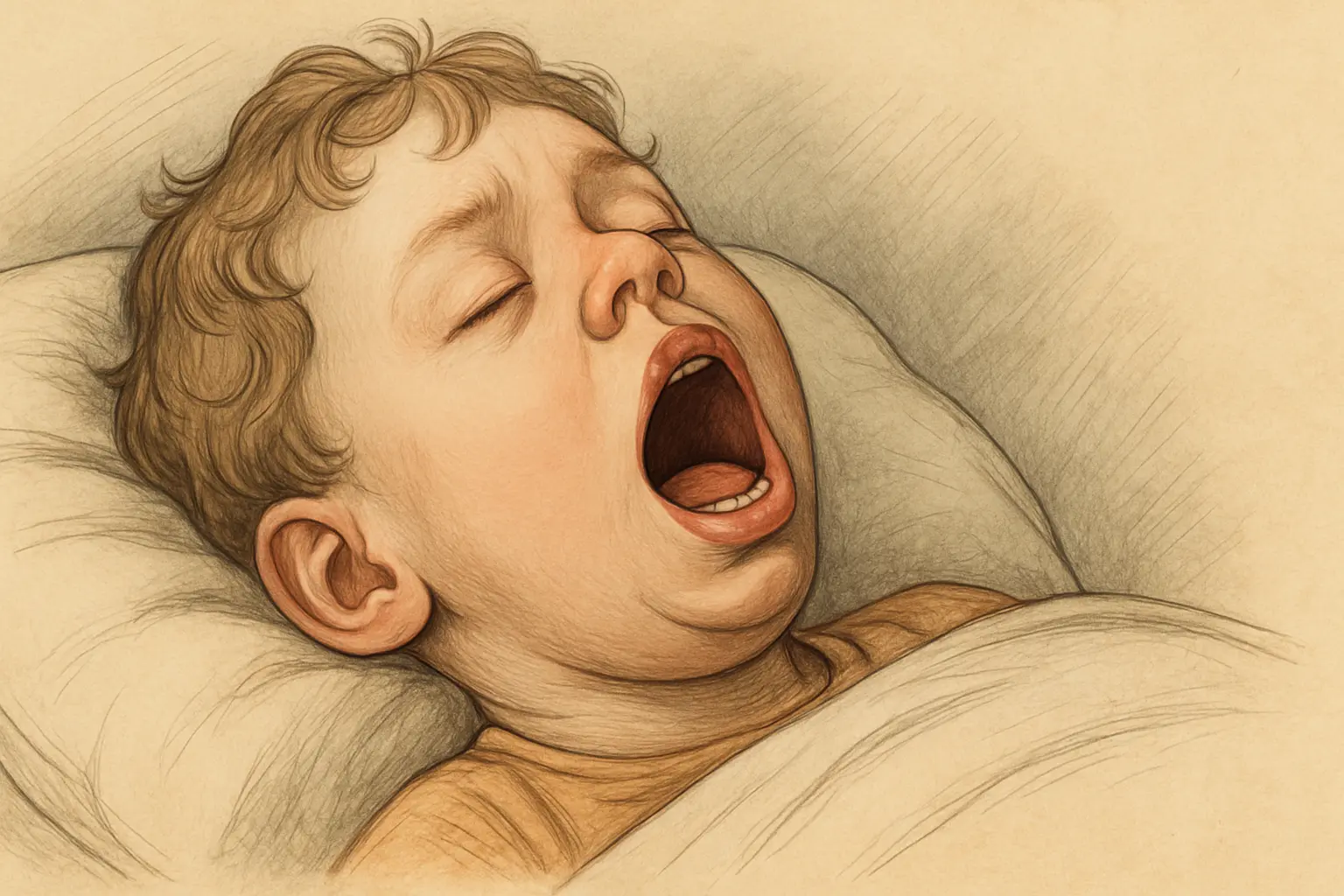Mouth Breathing in Children: Risks for Sleep and Development
Mouth breathing is common in children with nasal obstruction or allergies, but it can lead to chronic snoring, disrupted sleep, and developmental issues.
Recognizing this early is key to healthy growth and cognitive development.
Causes of Mouth Breathing
- Chronic nasal congestion
- Enlarged tonsils or adenoids
- Habitual patterns from early childhood
- Allergies and environmental irritants
SnailSleep monitoring indicates children who mouth-breathe at night have up to 40% higher snoring intensity and frequent oxygen dips.
Data Snapshot: Mouth Breathing vs. Sleep Disruption
| Age | % Mouth Breathing | Avg. Snore Score | Deep Sleep % |
|---|---|---|---|
| 4–6 years | 38% | 55 | 18% |
| 7–9 years | 42% | 60 | 16% |
| 10–12 years | 35% | 52 | 19% |
Consequences for Sleep and Development
- Airway collapse → louder snoring, sleep fragmentation
- Lower oxygen saturation → daytime fatigue, learning difficulties
- Dental and facial development → long-term orthodontic issues
- Behavioral impact → irritability, inattention
Intervention Strategies
- Nasal hygiene — saline sprays, allergy treatment
- Myofunctional exercises — tongue and jaw exercises to promote nasal breathing
- Positional therapy — encourage side sleeping
- Monitor patterns with AI — SnailSleep detects mouth breathing events and snoring severity
Case Study: Emma, Age 8
Emma's parents noticed frequent snoring and restless nights.
SnailSleep analysis confirmed predominant mouth breathing.
After nasal spray therapy, side-sleeping guidance, and daily breathing exercises, her snoring reduced 45%, and daytime alertness improved.
Related Articles
- Mouth Breathing in Sleep: Hidden Cause of Chronic Snoring
- Late Bedtimes in Children: Impacts on Sleep and Snoring
- Children and Snoring: Identifying Sleep-Related Breathing Issues Early

